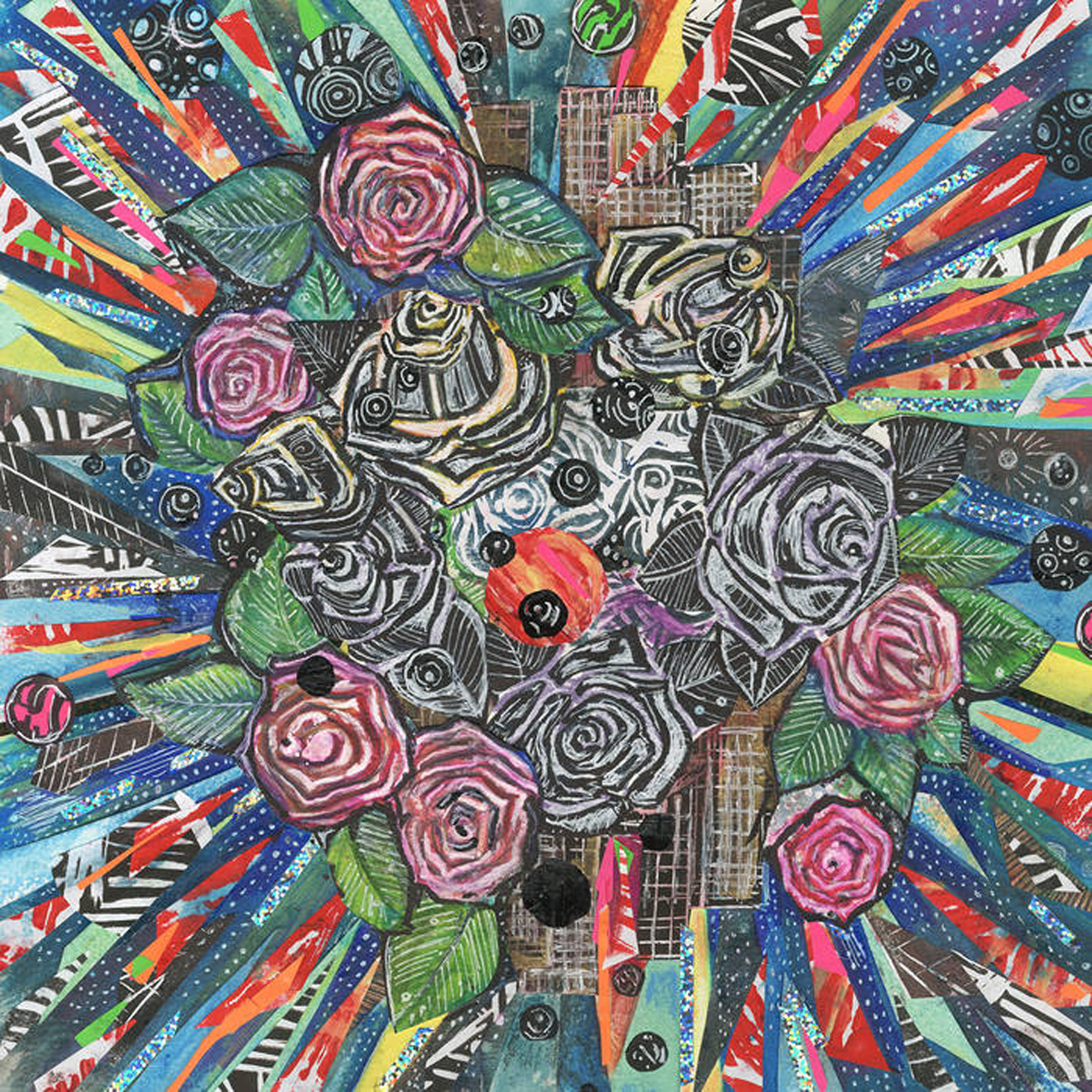Little Annie, "Trace"
 Little Annie’s latest solo album is a bit of a freewheeling evolution upon her recent cabaret/torch song work with pianist Paul Wallfisch, though Wallfisch was notably still involved in the lead single "Dear John."  For the rest of the album, however, Annie alternately collaborated with Toronto multi-instrumentalist Ryan Driver and Brooklyn electronic trio Opal Onyx.  Naturally, the more rhythmic and spoken-word-themed electronic pieces are the more dramatic departures, recalling some of her ‘80s work as Annie Anxiety.  While the Driver pieces show a considerably more subtle change, that seems to be the more significant and (presumably) more lasting one, taking Annie’s "chanteuse" persona in a more lush, lively, and conventionally beautiful direction.  Also of note: the title piece is easily one of the finest pieces of Annie's career.
Little Annie’s latest solo album is a bit of a freewheeling evolution upon her recent cabaret/torch song work with pianist Paul Wallfisch, though Wallfisch was notably still involved in the lead single "Dear John."  For the rest of the album, however, Annie alternately collaborated with Toronto multi-instrumentalist Ryan Driver and Brooklyn electronic trio Opal Onyx.  Naturally, the more rhythmic and spoken-word-themed electronic pieces are the more dramatic departures, recalling some of her ‘80s work as Annie Anxiety.  While the Driver pieces show a considerably more subtle change, that seems to be the more significant and (presumably) more lasting one, taking Annie’s "chanteuse" persona in a more lush, lively, and conventionally beautiful direction.  Also of note: the title piece is easily one of the finest pieces of Annie's career.
As an outside observer, the central problem with Little Annie's oeuvre to date has been one that most other artists would probably love to have: she has a magnetic presence and flair for style that seems quite difficult to fully capture on a recording.  Also, while her current role as smoky voiced chanteuse is ideal for showcasing her power as a performer, reverent renditions of subdued and smoldering jazz standards are not particularly conducive terrain for conveying the full "Little Annie" experience.  It is a classic "square peg, round hole" scenario.  With Trace, however, Annie has found a much better balance between cabaret stylist and her more idiosyncratic gifts.  Those two sides rarely coexist easily within the same song, but at least both sides are somewhat equally represented here–the Opal Onyx bits are especially effective at highlighting Annie’s eccentric edges.  Even if pieces like the brief acapella opener "Cold World" or the throbbing, sassy, and delightfully absurd "Bitching Song" are not particularly substantial, they provide a welcome injection of personality and serve as a very effective contrast to the album’s more straightforward and jazz-based fare.  One of the Driver pieces ("Midlife Lazarus") is even more radical, beautifully weaving Annie's spoken-word with doomy guitar sludge and a very unexpected choir.  It sounds like absolutely nothing else on the album, but works well as a self-contained entity.  Annie should strongly consider sending Sunn O))) her resumé.
Impressively, the pieces written by Annie and Driver fit quite seamlessly with the album’s two standards ("India Song" and "You Don’t Know What Love Is").  I am not sure it is ever a good idea to go toe-to-toe with Billie Holiday or Nina Simone without at least radically overhauling an arrangement, but Annie definitely gets points for at least picking good songs to cover and she very much holds her own. More importantly, Annie's own "You Better Run" sounds like something that Holiday or Simone themselves might have incorporated into their repertoires if the timing were different.  I am also quite fond of the sensuous Latin jazz of "Break It You Buy It," as it takes Annie’s characteristic sultry melancholia in a sexier and livelier direction than usual.  The album’s highlights, however, are the very different "She Has a Way" and the closing title piece.  "She has a Way" is one of the Opal Onyx pieces and its industrial-tinged narrative sounds like the belated perfection of Annie’s previous Jackamo-era aesthetic.  A lot of Annie’s most compelling work occurs when she delves into her misfortune-strewn urban character studies, though they generally require a lightness of touch to avoid erring on the side of too maudlin.  "She Has A Way" does not have a light touch at all, but it perversely works anyway.  On the other hand, "Trace" is just a tender and gorgeously lush love song with perfectly understated accompaniment, an irresistible hook, and a truly impressive vocal performance from Annie.  It is unquestionably one of the most moving and beautiful pieces of Annie's long career, but it is equally noteworthy that just about every original song on Trace seems better than either of the two standards.  While Annie excels as an interpreter/stylist, she is still generally at her best when she is channeling her own words.
If Trace can be said to have a flaw, it is only that it is a bit kaleidoscopic: it is readily apparent that Annie had multiple collaborators and shifted directions several times while the album was gradually taking shape.  In an uncharitable light, that could be seen as a lack of clear vision.  I think that that variety (whether intended or not) actually serves Annie quite well though, as a full album of torch songs or piano ballads can get quite numbing regardless of the artist’s abilities due to the inherently limited palette and unrelentingly noirish mood.  While Ryan Driver's guidance and arrangement talents definitely deserve a lot of credit for Trace's success (he apparently talked Annie into singing more and growling less), the biggest strength is the songs themselves.  Annie has always had a wonderfully soulful and throaty voice and charisma to burn, so it is always just a question of finding or writing strong enough material to bring that out.  Also, Trace excels in some less tangible ways as well, as it feels like a more fun and vibrant affair than some of her previous "jazz chanteuse" albums.  I have no idea if that is a result of the production, the performances, the arrangements or all three, but I definitely like it.  Whatever convoluted formula Annie has here, I sincerely hope she continues using it.  I suspect Soul Possession will probably forever reign as my favorite of Annie’s albums, but Trace is probably the high point of her creative rebirth as a cabaret diva.
 



